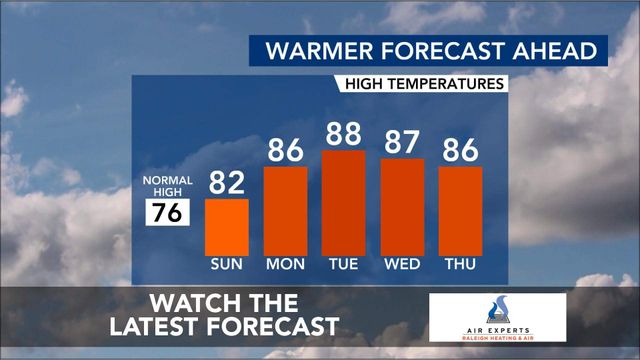Ask the meteorologist: How can clouds make the temperature rise?

Question: I understand how clouds moving in at night can stop the temperature drop, but how can they make the temperature rise? Where does this energy come from? — Bill Current
Answer: Some background helps to set up the explanation here. All objects having any temperature beyond absolute zero emit infrared radiation at an intensity that is proportional to the temperature. The air temperature falls on a typical night because once the sun sets incoming shortwave infrared radiation is no longer heating the ground, which continues to lose energy by emitting longwave infrared radiation (it does this during the day as well, but that loss is more than offset by the energy from the sun). The cooling ground and other surfaces in turn cool the air near the ground through a combination of conduction and convection.
On a clear, calm night, the surface cools rapidly and efficiently because the outgoing radiant energy is largely unopposed by incoming energy from above. If the night begins with clear skies and the ground cools substantially, and then a layer of clouds moves in overhead, the situation changes because the clouds will emit longwave radiation as well, some going upward from the top of the cloud, some going downward from the base. The intensity of the downward radiation is dependent on the height, thickness and temperature of the cloud. If those factors combine in such a way that the downward radiation from the cloud is of greater intensity than the upward radiation from the ground, then the surface temperature will begin to climb. This is most likely when the clouds are fairly low or when the clouds exist in the presence of a temperature inversion that leaves the clouds warmer than the ground is. There may also be cases in which the clouds only partially offset the radiant heat loss from the ground so that temperatures fall more slowly than they would otherwise, but do not necessarily rise.
- Ask the meteorologist: How do clouds make rain?
- Ask the meteorologist: How do clouds form and create snow?
A number of other complexities can affect the outcome on any given night. Even if the clouds do not entirely balance the heat loss from the surface themselves, for example, they might get it close enough that heat stored deeper in the soil is able to well up to the surface and cause the temperature to rise. Heat is transferred very slowly through the soil so that on clear nights it would not be able to keep up with radiant cooling, but with some cloud cover may be enough to help temperatures creep upward. In addition, there can be some nights when frontal systems lead to warmer air blowing into the region from elsewhere and causing temperatures to rise. At times, this process can bring an increase in temperatures regardless of cloud conditions.











